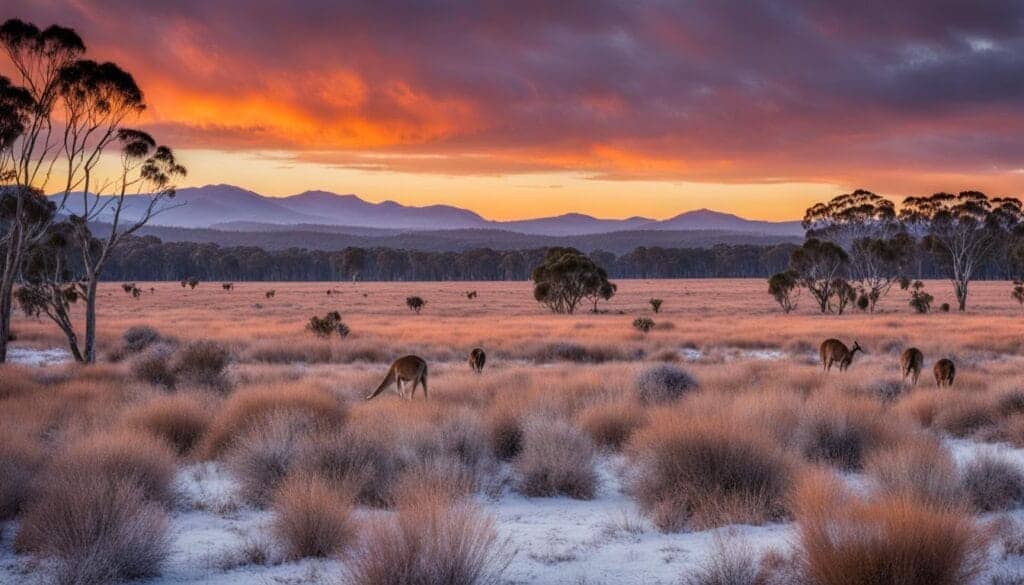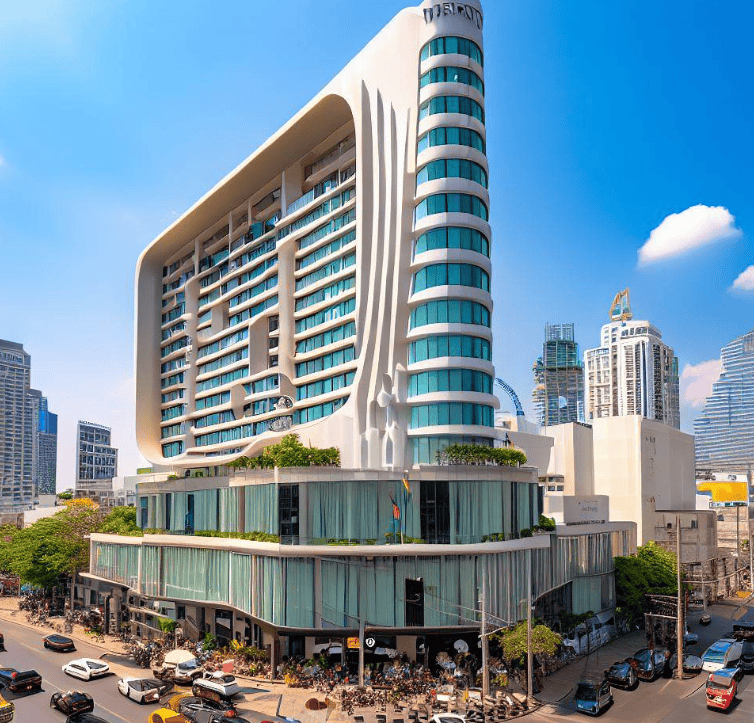Australia – the land down under that has stolen my heart time and time again. As a seasoned traveler who has had the privilege of visiting this magnificent country numerous times, I can confidently say that the timing of your trip can make all the difference in experiencing the best of what Australia has to offer.
With its vast and diverse landscapes, ranging from sun-kissed beaches to rugged outback, Australia is a year-round destination that can cater to various interests and preferences. However, after years of exploring this beautiful country, I’ve realized that there’s a sweet spot – a period of the year when the weather is perfect, the crowds are smaller, and the outdoor activities are at their peak.
In this article, I’ll share the best time to visit Australia, so you can plan your trip accordingly and make the most of your adventure in this incredible land. Whether you’re a beach lover, an adventure seeker, or a nature enthusiast, it does not matter – there is always a good time to visit Australia. 😎
5 Key Factors Influencing Your Visit
Climate Zones
Australia is a vast country with diverse climate zones, which can significantly affect the best time to visit. Understanding these zones helps determine ideal visiting times for different regions.
Here’s a breakdown of the main climate zones:
1. Tropical Climate
- Location: Northern Australia (e.g., Darwin, Cairns)
- Characteristics:
- Wet Season: November to April, characterized by heavy rainfall and humidity.
- Dry Season: May to October, with warm temperatures and minimal rain.
- Best Time to Visit: May to October for pleasant weather and outdoor activities.
2. Desert Climate
- Location: Central Australia (e.g., Alice Springs, Uluru)
- Characteristics:
- Hot Days and Cold Nights: Summers can be extremely hot, while winters can be quite cold at night.
- Low Rainfall: Very little rain throughout the year.
- Best Time to Visit: April to October when temperatures are more moderate.
3. Temperate Climate
- Location: Southern Australia (e.g., Sydney, Melbourne, Adelaide)
- Characteristics:
- Four Distinct Seasons: Spring (September to November), Summer (December to February), Autumn (March to May), and Winter (June to August).
- Mild Winters and Warm Summers: Summers can be hot, especially in January, while winters are cool and wet.
- Best Time to Visit: September to November (spring) and March to May (autumn) for comfortable temperatures and fewer crowds.
4. Mediterranean Climate
- Location: Parts of Southern Australia (e.g., Perth)
- Characteristics:
- Hot, Dry Summers: Summers are typically hot and dry.
- Mild, Wet Winters: Winters are cooler with more rainfall.
- Best Time to Visit: September to November and March to May for ideal weather conditions.
Summary of Best Times to Visit Based on Climate Zones
| Climate Type | Best Travel Months |
|---|---|
| Tropical | May to October |
| Desert | April to October |
| Temperate | September to November, March to May |
| Mediterranean | September to November, March to May |
Understanding these climate zones can help you plan your trip to Australia effectively, ensuring you experience the best weather for your desired activities!

Seasonal Variations in Australia
Australia is a vast country with diverse climates, so the best time to visit can vary significantly depending on the region you plan to explore. I have listed the seasonal variations across different areas below:
1. Summer (December to February)
- Climate: Hot and humid in most regions, especially in the north.
- Best For: Beach activities, festivals, and outdoor adventures.
- Popular Destinations:
- Sydney: Enjoy the beaches and the famous Sydney Festival.
- Cairns: Ideal for exploring the Great Barrier Reef.
2. Autumn (March to May)
- Climate: Mild temperatures and less humidity.
- Best For: Wine tours and outdoor activities without the summer heat.
- Popular Destinations:
- Barossa Valley: Perfect for wine tasting during the grape harvest.
- Melbourne: Experience the vibrant arts scene and pleasant weather.
3. Winter (June to August)
- Climate: Cooler temperatures, especially in the southern regions.
- Best For: Skiing in the mountains and exploring cities with fewer tourists.
- Popular Destinations:
- Snowy Mountains: Great for skiing and snowboarding.
- Tasmania: Explore the stunning landscapes and wildlife.
4. Spring (September to November)
- Climate: Warming up with blooming flowers and clear skies.
- Best For: Outdoor activities and wildlife spotting.
- Popular Destinations:
- Flinders Ranges: Ideal for hiking and seeing wildflowers.
- Sydney: Enjoy the beautiful spring weather and outdoor festivals.
Knowing these seasonal variations will help you choose the best time to visit Australia based on your interests and the experiences you want to have! ✌️
Regional Considerations
Australia is a vast country with diverse climates and environments, making the best time to visit vary significantly depending on the region.
Here’s a breakdown of the different regions and their ideal visiting times:
1. Northern Australia (e.g., Darwin, Cairns)
- Climate: Tropical climate with a wet and dry season.
- Best Time to Visit:
- Dry Season (May to October): This is the most popular time to visit. Expect warm temperatures, low humidity, and little rainfall.
- Wet Season (November to April): Characterized by heavy rainfall and humidity, this season can lead to tropical storms. However, it may be less crowded and more affordable.
2. Central Australia (e.g., Alice Springs, Uluru)
- Climate: Semi-arid with hot summers and mild winters.
- Best Time to Visit:
- Autumn (March to May) and Spring (September to November): These seasons offer mild temperatures, making it ideal for exploring the Outback and visiting iconic landmarks like Uluru.
- Summer (December to February): Extremely hot, with temperatures often exceeding 40°C (104°F), making outdoor activities challenging.
3. Southern Australia (e.g., Melbourne, Sydney, Adelaide)
- Climate: Temperate climate with four distinct seasons.
- Best Time to Visit:
- Spring (September to November): Mild weather and blooming flowers make it a lovely time for outdoor activities and festivals.
- Autumn (March to May): Similar to spring, with cooler temperatures and beautiful fall foliage.
- Summer (December to February): Great for beach activities, but can be hot, especially in cities like Melbourne.
- Winter (June to August): Generally cooler and wetter, but can be a good time for skiing in the Australian Alps.
4. Western Australia (e.g., Perth, Margaret River)
- Climate: Ranges from tropical in the north to temperate in the south.
- Best Time to Visit:
- Autumn (March to May) and Spring (September to November): Ideal for exploring the coastline, national parks, and vineyards. The weather is pleasant and conducive to outdoor activities.
- Summer (December to February): Hot, especially in the northern regions, but great for beachgoers.
- Winter (June to August): Cooler and wetter in the south, but still a good time to visit the northern areas.
5. Tasmania
- Climate: Temperate maritime climate with cool summers and mild winters.
- Best Time to Visit:
- Summer (December to February): The warmest months, perfect for hiking and exploring national parks.
- Autumn (March to May): Beautiful fall colors and fewer crowds.
- Winter (June to August): Cold and wet, but offers unique experiences like snow sports in the highlands.
Events and Festivals
Australia is a vast country with diverse climates and cultures, which means there are numerous events and festivals throughout the year. Below is a breakdown of some of the best times to visit based on popular events and festivals:
1. Summer Festivals (December to February)
- Sydney Festival (January)
- What: A major arts festival featuring music, theater, dance, and visual arts.
- Why Visit: Experience vibrant performances and cultural events in one of Australia’s most iconic cities.
- Australia Day (January 26)
- What: A national day celebrating the arrival of the First Fleet at Port Jackson in 1788.
- Why Visit: Enjoy parades, fireworks, and community events that showcase Australian culture.
- Woodford Folk Festival (Late December to Early January)
- What: A week-long festival celebrating music, arts, and culture in a beautiful natural setting.
- Why Visit: Immerse yourself in a unique blend of performances, workshops, and community gatherings.
2. Autumn Events (March to May)
- Melbourne International Comedy Festival (March to April)
- What: One of the largest comedy festivals in the world, featuring local and international comedians.
- Why Visit: Enjoy a good laugh while experiencing Melbourne’s vibrant arts scene.
- ANZAC Day (April 25)
- What: A day of remembrance for Australian and New Zealand Army Corps members who served in wars.
- Why Visit: Participate in dawn services and parades to honor the sacrifices of veterans.
3. Winter Festivals (June to August)
- Vivid Sydney (May to June)
- What: A festival of light, music, and ideas, transforming the city with stunning light installations.
- Why Visit: Witness the breathtaking light displays and enjoy live music performances across Sydney.
- Queensland Music Festival (July)
- What: A celebration of music across various genres, featuring performances and workshops.
- Why Visit: Experience the rich musical culture of Queensland and engage with local artists.
4. Spring Events (September to November)
- Melbourne Fringe Festival (September)
- What: A celebration of independent arts, showcasing theater, comedy, and visual arts.
- Why Visit: Discover new talent and innovative performances in a city known for its arts culture.
- Sculpture by the Sea (October to November)
- What: An outdoor sculpture exhibition held along the stunning coastal walk from Bondi to Tamarama.
- Why Visit: Enjoy breathtaking views while exploring unique art installations.
5. Other Notable Events Throughout the Year
- Sydney Mardi Gras (February to March)
- What: A vibrant celebration of LGBTQ+ pride, featuring a parade, parties, and cultural events.
- Why Visit: Experience a colorful and inclusive atmosphere that celebrates diversity.
- Brisbane Festival (September)
- What: A month-long festival featuring theater, music, and dance performances.
- Why Visit: Engage with the local arts community and enjoy a variety of performances.
If you have no idea how to plan your visit to Australia, consider aligning your trip with one of these exciting events or festivals. Each season offers unique experiences that showcase the country’s rich culture and vibrant atmosphere. Whether you’re interested in arts, music, or cultural celebrations, there’s something for everyone throughout the year!

Crowd Levels in Australia
When planning a trip to Australia, it’s essential to consider not only the weather and activities but also the crowd levels during different times of the year. Here’s how crowd levels can influence your experience:
1. Peak Season (December to February)
- Characteristics: This is summer in Australia, and it attracts the most tourists.
- Crowd Levels:
- High: Popular destinations like Sydney, Melbourne, and the Great Barrier Reef can be very crowded.
- Example: If you visit Sydney during New Year’s Eve, expect huge crowds at the Harbour for the fireworks.
- Pros: Vibrant atmosphere, numerous festivals, and events.
- Cons: Higher prices for accommodations and longer wait times at attractions.
2. Shoulder Season (September to November & March to May)
- Characteristics: These months offer milder weather and fewer tourists.
- Crowd Levels:
- Moderate: Popular attractions are less crowded, making it easier to explore.
- Example: Visiting the Great Barrier Reef in October means you can enjoy the scenery without overwhelming crowds.
- Pros: More affordable prices, pleasant weather, and a good balance of activities.
- Cons: Some events may be limited compared to peak season.
3. Off-Peak Season (June to August)
- Characteristics: This is winter in Australia, with cooler temperatures, especially in the southern regions.
- Crowd Levels:
- Low: Fewer tourists, particularly in southern cities.
- Example: Visiting Melbourne during this time means shorter lines at cafes and galleries.
- Pros: Lower prices on flights and accommodations, and a chance to experience local life without the tourist rush.
- Cons: Some attractions may have reduced hours or be closed for maintenance.
4. Regional Variations
- Northern vs. Southern Australia:
- The northern regions (like Cairns) are busy during the winter months when southern Australians escape the cold.
- In contrast, southern cities (like Melbourne) might see lower crowds during their winter.
- Example: If you plan to visit the Great Barrier Reef, consider going in the shoulder season when the weather is still warm, but the crowds are fewer.
Now that you understand the crowd levels throughout the year, you can tailor your visit to Australia to match your preferences for activities, budget, and experiences. Whether you enjoy bustling festivals or quiet explorations, knowing when to visit can make all the difference in your travel experience.
Recommendations Based on Interests
Beach Lovers
If you are a beach lover, the ideal time to visit is during the Australian summer, which runs from December to February. During these months, temperatures can soar, especially in the northern regions like Queensland and the Great Barrier Reef, where you can enjoy warm waters and vibrant marine life.
However, keep in mind that this is also the peak tourist season, so popular beaches may be crowded.
City Explorers
For those interested in exploring the vibrant cities such as Sydney and Melbourne, the shoulder seasons of spring (September to November) and autumn (March to May) are often recommended.
During these times, the weather is pleasantly mild, which allows for comfortable sightseeing and outdoor activities.
You can enjoy the blooming flowers in spring or the stunning autumn foliage in parks and gardens. Additionally, these seasons tend to have fewer tourists, making it easier to explore attractions without long lines.
Adventure Seekers
If you are an adventure seeker or a nature enthusiast, consider visiting during the winter months from June to August, particularly in the southern regions. While it may be cooler, this is an excellent time for skiing in places like the Snowy Mountains or exploring the beautiful landscapes of Tasmania.
Wildlife enthusiasts will also appreciate this time, as it’s easier to spot animals in their natural habitats, especially in national parks.
Cultural Enthusiasts
For those interested in unique cultural experiences, timing your visit to coincide with major events or festivals can enhance your trip.
For example, the Sydney Festival in January showcases a range of performances and art installations, while the Melbourne International Comedy Festival in March and April offers a lively atmosphere filled with laughter and entertainment.
There you have it, the best time to visit Australia hinges on what you want to experience. Whether it’s basking in the sun on a beach, enjoying city life, embarking on outdoor adventures, or immersing yourself in cultural festivities, aligning your travel dates with your interests will ensure a memorable trip.
Practical Tips to Avoid Extreme Weather in Australia
When planning a trip to Australia, it’s essential to consider the weather conditions throughout the year to ensure a pleasant experience.
Here are some practical steps to help you avoid extreme weather:
Understand Australia’s Seasons
- Summer (December to February): Can be very hot, especially in the northern regions.
- Autumn (March to May): Generally mild and pleasant; a great time to visit.
- Winter (June to August): Cooler temperatures, particularly in the southern regions; some areas may experience snow.
- Spring (September to November): Warm and blooming; another ideal time to visit.
Research Regional Climates
- Northern Australia (e.g., Cairns): Tropical climate; can be hot and humid in summer, with a wet season from November to April.
- Southern Australia (e.g., Melbourne, Sydney): Experiences four distinct seasons; winter can be chilly and rainy.
- Central Australia (e.g., Alice Springs): Desert climate; extreme heat in summer and cool nights in winter.
Check Weather Patterns
- Use Weather Websites/Apps: Websites like Weather.com or apps like AccuWeather can provide forecasts.
- Look for Historical Weather Data: Research average temperatures and rainfall for the months you plan to visit.
Avoid Natural Disasters
- Cyclone Season: Typically from November to April in northern Australia; avoid visiting during this time if possible.
- Bushfire Season: Mainly in summer (December to February); check fire risk levels before traveling to bushland areas.
Plan Activities According to Weather
- Outdoor Activities: Best enjoyed in autumn and spring when temperatures are milder.
- Indoor Activities: Consider visiting museums, galleries, or shopping centers during extreme heat or cold.
Be Flexible with Travel Dates
- Adjust Your Itinerary: If you notice extreme weather forecasts, be prepared to change your plans or reschedule activities.
Pack Accordingly
- Clothing: Lightweight, breathable clothing for hot weather; layers for cooler regions; waterproof gear if rain is expected.
- Sun Protection: Sunscreen, hats, and sunglasses are crucial, especially in summer.
By following these steps and being aware of the weather patterns in Australia, you can plan a trip that maximizes enjoyment while minimizing the risk of encountering extreme weather conditions. Happy travels!
Summing Up
The best time to visit Australia depends on your personal preferences and the specific activities and regions you plan to explore. Each season offers its own highlights and unique experiences, so it’s important to consider various factors when planning your trip. The weather, crowds, and special events can all impact your vacation experience, so it’s essential to plan accordingly.
Consider booking accommodations and flights in advance, especially during the high season. Pack appropriate clothing for the weather conditions and take note of school breaks and festivals that may affect availability and prices.
For those who prefer to avoid crowds and save money, visiting during the shoulder or low seasons is definitely a great option.
With its diverse climate zones and a wide range of activities, Australia is a destination that caters to various interests and preferences. Regardless of the time you choose to visit, plan accordingly and make the most of your Australian adventure.

As an ex-journalist, Elizabeth has always had a passion for adventure and has climbed some of the world’s most challenging peaks, including Mount Everest.
When she’s not exploring the great outdoors, Elizabeth loves to experiment in the kitchen, always trying out new recipes and ingredients. She’s also a master at finding budget accommodations and loves to share her tips and tricks with other travelers.
In addition to her love of travel, Elizabeth is an avid collector of luggage, always on the lookout for the most budget-friendly and durable luggage to take on her next adventure. Her passion for exploring new destinations and experiencing new cultures makes her a valued member of Thrift Escapades.


